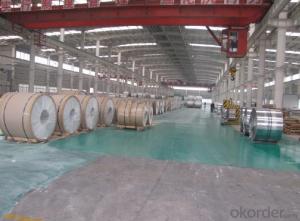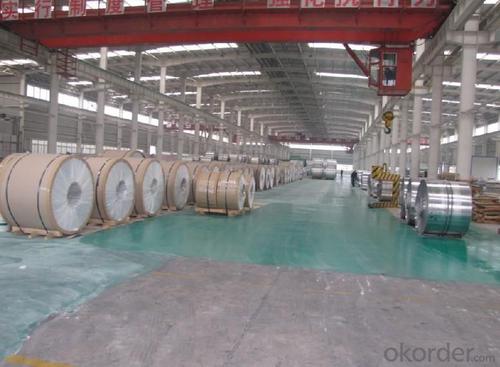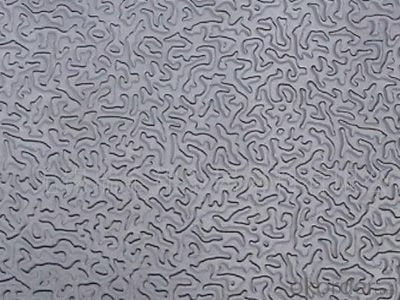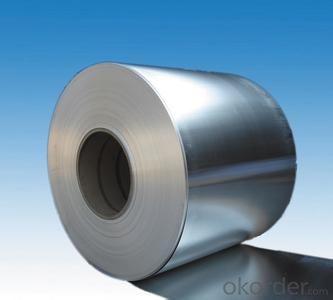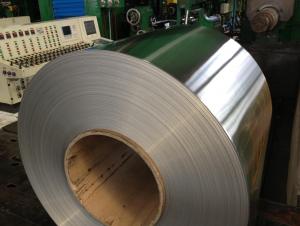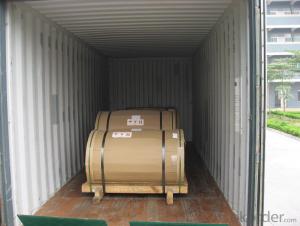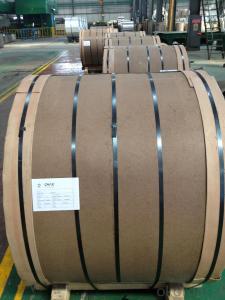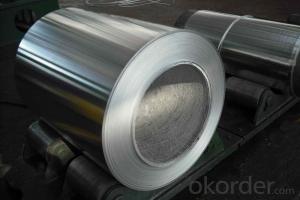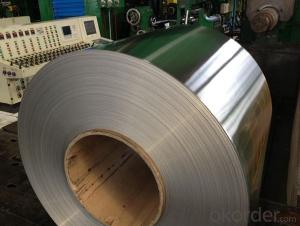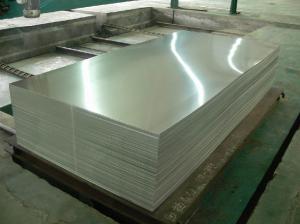Best Aluminum Baking Sheets - Mill Finished Aluminum Coils for Rerolling
- Loading Port:
- Shanghai
- Payment Terms:
- TT OR LC
- Min Order Qty:
- 5 m.t.
- Supply Capability:
- 5000 m.t./month
OKorder Service Pledge
OKorder Financial Service
You Might Also Like
Specification
1.Structure of Mill Finished Aluminium Coils for Rerolling
Mill Finished Aluminium Coils for Rerolling his strip can be rolled down to aluminium coil,sheet,circle ect. The alloy AA1050 is widly used in building, industry ect. Its weight is much lower than steel. So many customers choosed aluminium material instead of steel.
2. Main features of Polyester Mill Finished Aluminium Coils for Rerolling
a.Competitive price---We have our own mills and can produce mill finished aluminium coils, so we can control the production cost better.
b.Professional after-sale service---We have more than 15 years exportation experience and you need not worry about the exporation problems.
c.Fast delivery time---We can control the delivery time within 35 days.
3. Image
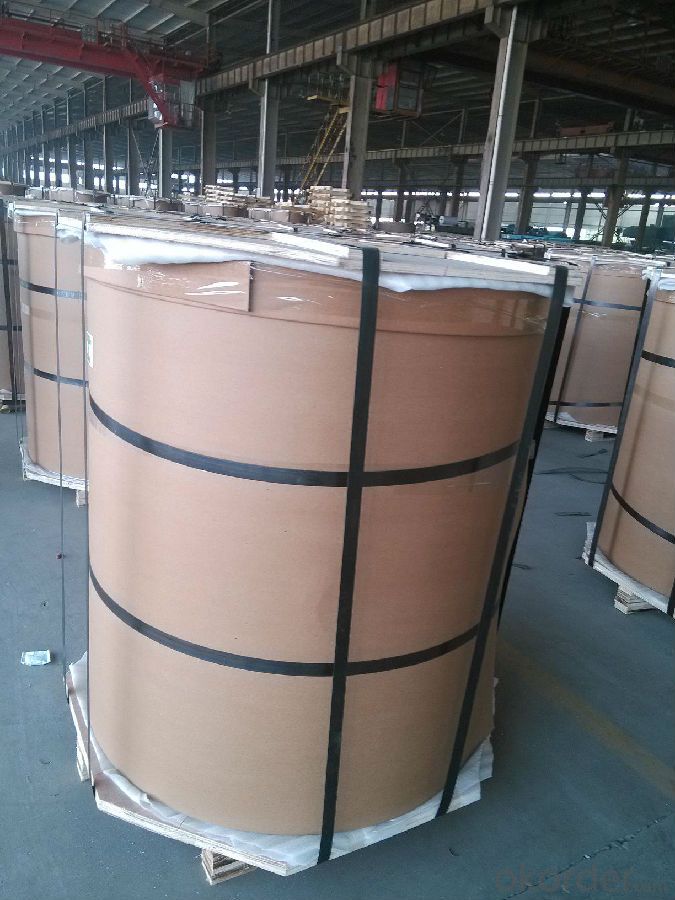
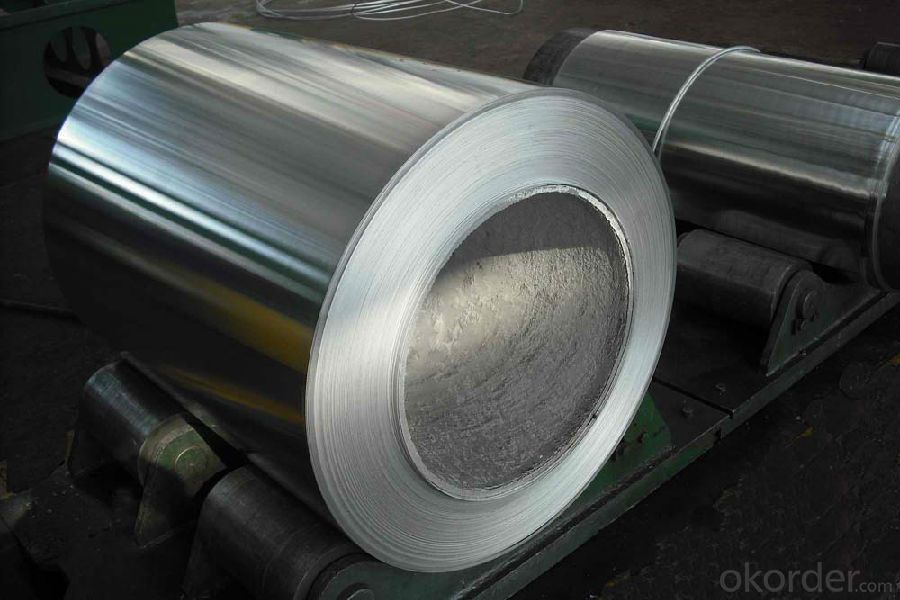
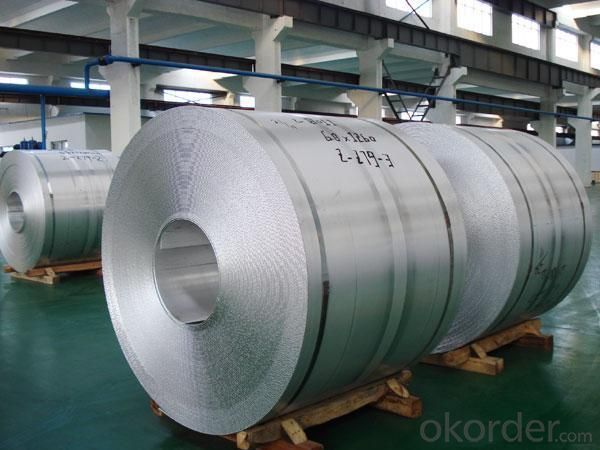
4. Product Specification
| Alloy | Temper | Thickness | Width | Weight |
| AA1050 | H14 | 0.2-3MM | 1000-1800MM | 2 tons |
5.FAQ:
What is the quality standard?
---Usually our standard is GB3880-2006
What is the largest width?
---It is 2300mm
What is the MOQ?
---Usually we can accept 80 tons.
- Q: Can aluminum sheets be used as heat shields?
- Yes, aluminum sheets can be used as heat shields. Aluminum has excellent thermal conductivity, meaning it can efficiently conduct and transfer heat away from the source. Additionally, aluminum has a high melting point, allowing it to withstand high temperatures without warping or deforming. These properties make aluminum sheets an ideal choice for heat shield applications, such as protecting sensitive components or structures from heat damage in various industries including automotive, aerospace, and industrial applications. Furthermore, aluminum is lightweight and relatively easy to shape, making it a practical choice for heat shields that need to be installed in tight spaces or require complex designs. Overall, the use of aluminum sheets as heat shields offers effective thermal protection while providing durability, versatility, and cost-effectiveness.
- Q: Normally, when I install a 30-amp dryer receptacle, the wire is #10 copper and I double over the end with lineman's pliers prior to landing it in the lug just to be extra tight. Today I replaced a dryer outlet wired with #8 aluminum SE. The quandaray I have is that the lugs seem made for #6 and the #8 just sort of flattens and divides under the screw. Is this safe? The doubling over move makes the wire way too thick for the lugs to close. I've been doing electric for many years and have never run into this. Should I go back and re-run the circuit (only about 30 feet) in #10 copper? What is the actual draw of a typical electric dryer on high heat, anyway? Thanks.
- Copper safer than Alum at high amperages
- Q: This question seeks to understand the specific characteristics of aluminum sheets that make them suitable for various applications.
- <p>Aluminum sheets possess several properties that make them versatile for different applications: 1. Corrosion resistance: Aluminum forms a protective oxide layer, which makes it resistant to corrosion. 2. Lightweight: Aluminum is lighter than many other metals, which is beneficial for applications where weight is a concern. 3. High strength-to-weight ratio: Despite being lightweight, aluminum is strong and durable. 4. Good thermal and electrical conductivity: Aluminum conducts heat and electricity well, making it ideal for heat sinks and electrical components. 5. Formability: Aluminum can be easily shaped and bent, which is useful in construction and manufacturing. 6. Recyclability: Aluminum is highly recyclable, reducing waste and environmental impact. 7. Reflectivity: Aluminum reflects light and heat, which is useful in applications like solar reflectors and insulation. These properties vary in importance depending on the specific application, such as construction, automotive, aerospace, or consumer goods.</p>
- Q: How is aluminum sheet made?
- Aluminum sheet is made through a process called rolling, where a large aluminum ingot is passed through a series of rollers that gradually reduce the thickness of the metal until it reaches the desired sheet thickness. This process helps to improve the strength, flexibility, and surface finish of the aluminum sheet.
- Q: Can aluminum sheets be used for air ducts?
- Yes, aluminum sheets can be used for air ducts. Aluminum is a commonly used material for air ducts due to its lightweight and durable properties. It is resistant to corrosion, which makes it a suitable choice for HVAC systems. Aluminum sheets are often used to fabricate air ducts as they can be easily bent and shaped to fit the required dimensions. Additionally, aluminum has good thermal conductivity, allowing for efficient heat transfer within the ducts. Overall, using aluminum sheets for air ducts is a practical and effective choice.
- Q: What are the different alloy compositions available for aluminum sheets?
- There are several alloy compositions available for aluminum sheets, each with its own unique properties and applications. Some common alloy compositions include: 1. 1100: This alloy is known for its excellent corrosion resistance and high thermal conductivity. It is often used in chemical equipment, heat exchangers, and food processing equipment. 2. 3003: This alloy has good formability, moderate strength, and excellent corrosion resistance. It is commonly used in packaging, tanks, and architectural applications. 3. 5052: This alloy is known for its high strength and good formability. It is often used in marine applications, as well as in aircraft and automotive parts. 4. 6061: This alloy has excellent strength, good formability, and high corrosion resistance. It is commonly used in structural applications, such as in bridges, buildings, and transportation equipment. 5. 7075: This alloy is known for its extremely high strength and good machinability. It is often used in aerospace applications, as well as in high-stress parts for the automotive and sporting goods industries. These are just a few examples of the many alloy compositions available for aluminum sheets. The choice of alloy will depend on the specific requirements of the application, such as strength, corrosion resistance, formability, and machinability.
- Q: Can the aluminum sheets be used for manufacturing electrical conductors?
- Yes, aluminum sheets can be used for manufacturing electrical conductors. Aluminum is a highly conductive metal, second only to copper in terms of electrical conductivity. It is widely used in various electrical applications, including power transmission lines, electrical cables, and wiring. Aluminum sheets can be rolled or extruded into different shapes and sizes to suit specific conductor requirements. Additionally, aluminum is lightweight, corrosion-resistant, and cost-effective compared to other conductive materials, making it a popular choice for electrical conductor manufacturing.
- Q: Can aluminum sheets be anodized without affecting their dimensions?
- Yes, aluminum sheets can be anodized without significantly affecting their dimensions. Anodizing is an electrochemical process that forms a protective oxide layer on the surface of aluminum, which improves its corrosion resistance and durability. The anodizing process involves immersing the aluminum sheet in an acid bath and passing an electric current through it. This causes the aluminum to oxidize, creating a layer of aluminum oxide on the surface. During the anodizing process, the aluminum oxide layer grows inward into the metal, while also building up on the surface. The growth of the oxide layer is controlled by the duration of the anodizing process, and it can be precisely controlled to achieve the desired thickness. Therefore, the dimensional changes caused by anodizing are minimal and can be easily accounted for in the design phase. However, it is important to note that anodizing can cause a slight increase in the thickness of the aluminum sheet. This is due to the growth of the oxide layer on the surface. Typically, the increase in thickness is around 50% of the overall oxide layer thickness. For example, if the desired oxide layer thickness is 10 micrometers, the overall increase in sheet thickness would be approximately 5 micrometers. In summary, while anodizing aluminum sheets can cause a slight increase in thickness, the dimensional changes are minimal and can be accurately predicted and accounted for in the design phase. Anodizing is a popular and effective method for enhancing the properties of aluminum sheets without significantly affecting their dimensions.
- Q: Are aluminum sheets suitable for pharmaceutical applications?
- Yes, aluminum sheets are suitable for pharmaceutical applications. Aluminum is a widely used material in the pharmaceutical industry due to its various beneficial properties. Firstly, aluminum sheets are lightweight and have excellent corrosion resistance. This makes them ideal for packaging pharmaceutical products as they can protect the contents from external factors such as moisture, light, and oxygen, which could potentially degrade the quality of the medication. Additionally, aluminum sheets can be easily formed into different shapes and sizes, allowing for customization in packaging design. They are also available in various thicknesses, providing options for different types of pharmaceutical products, from tablets and capsules to liquid medications. Furthermore, aluminum sheets have a high barrier property, effectively preventing the transfer of odors, flavors, and contaminants. This ensures the integrity and safety of the medication throughout its shelf life. Moreover, aluminum is a non-toxic material, which means it does not react with drugs or alter their composition. This makes it a suitable choice for pharmaceutical applications, where maintaining the purity and stability of the medication is crucial. In conclusion, aluminum sheets are highly suitable for pharmaceutical applications due to their lightweight, corrosion resistance, barrier properties, and non-toxic nature. They provide efficient protection and preservation of pharmaceutical products, ensuring their quality and safety.
- Q: What is the reflectivity of aluminum sheets?
- Aluminum sheets possess a considerably high reflectivity, typically falling within the range of 80% to 90%. Such elevated reflectivity can be attributed to the sleek surface and distinctive characteristics of aluminum, enabling it to effectively bounce back light and other electromagnetic waves. Consequently, aluminum sheets find wide application in scenarios that necessitate heightened reflectivity, including the creation of reflective surfaces, solar panels, and mirrors. Furthermore, the reflectivity of aluminum can be augmented even more by employing a reflective coating or meticulously polishing the surface.
Send your message to us
Best Aluminum Baking Sheets - Mill Finished Aluminum Coils for Rerolling
- Loading Port:
- Shanghai
- Payment Terms:
- TT OR LC
- Min Order Qty:
- 5 m.t.
- Supply Capability:
- 5000 m.t./month
OKorder Service Pledge
OKorder Financial Service
Similar products
Hot products
Hot Searches
Related keywords
